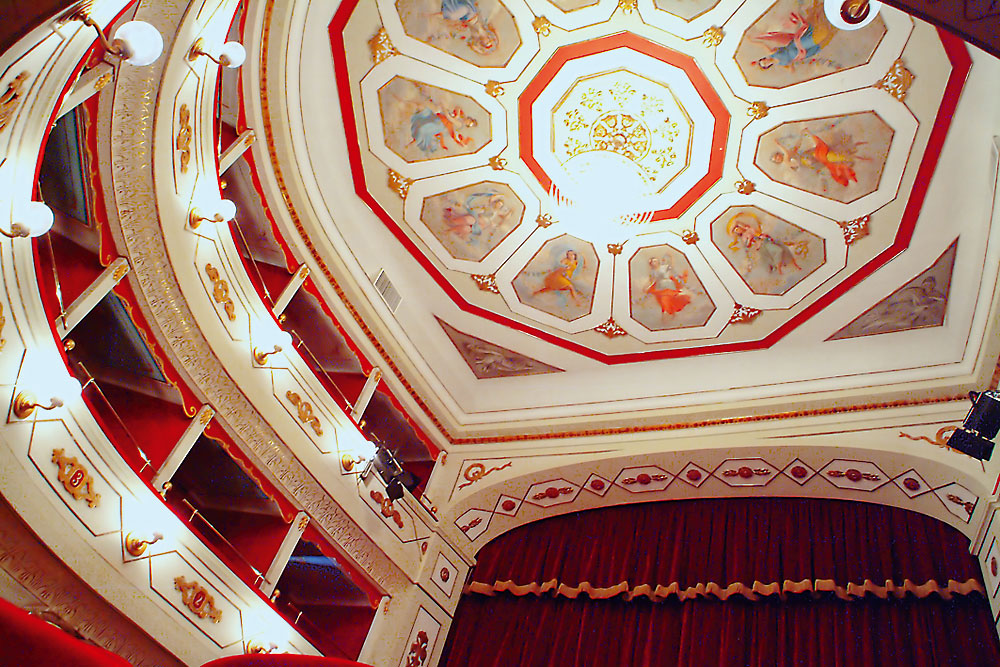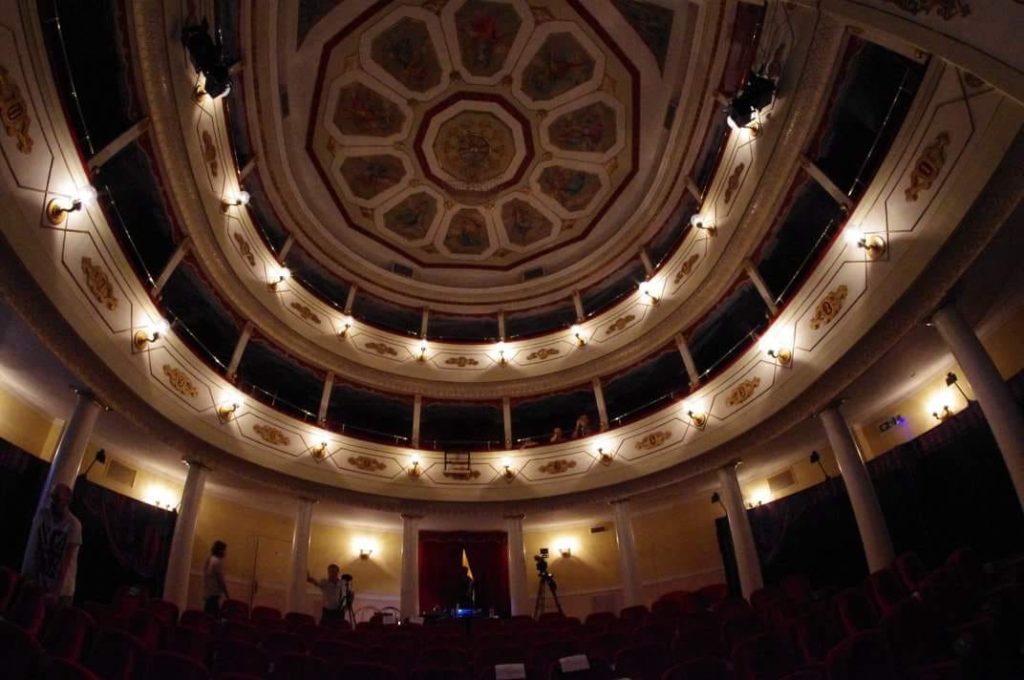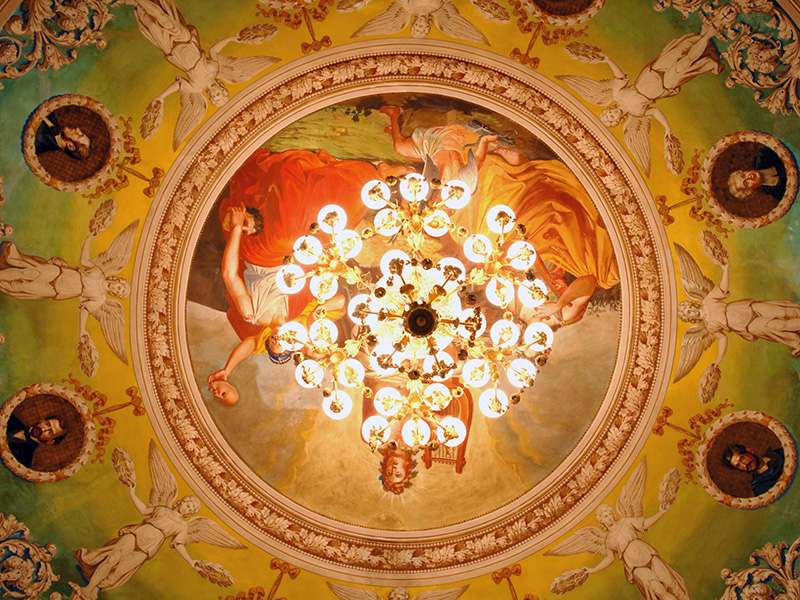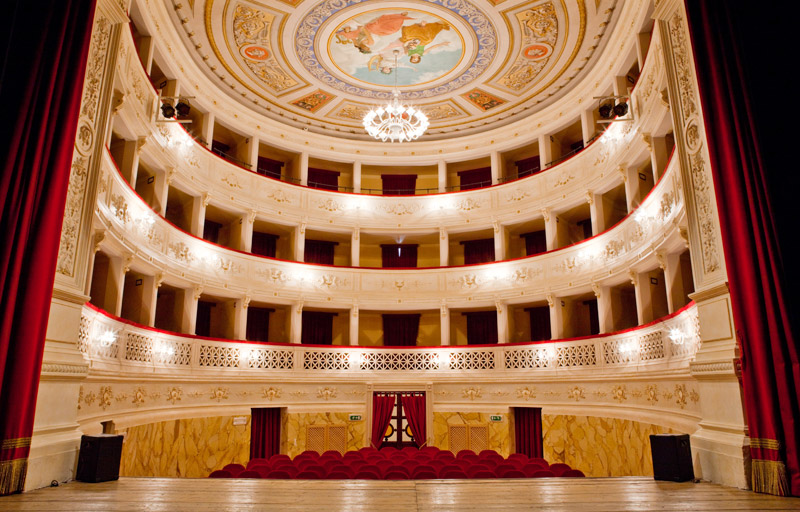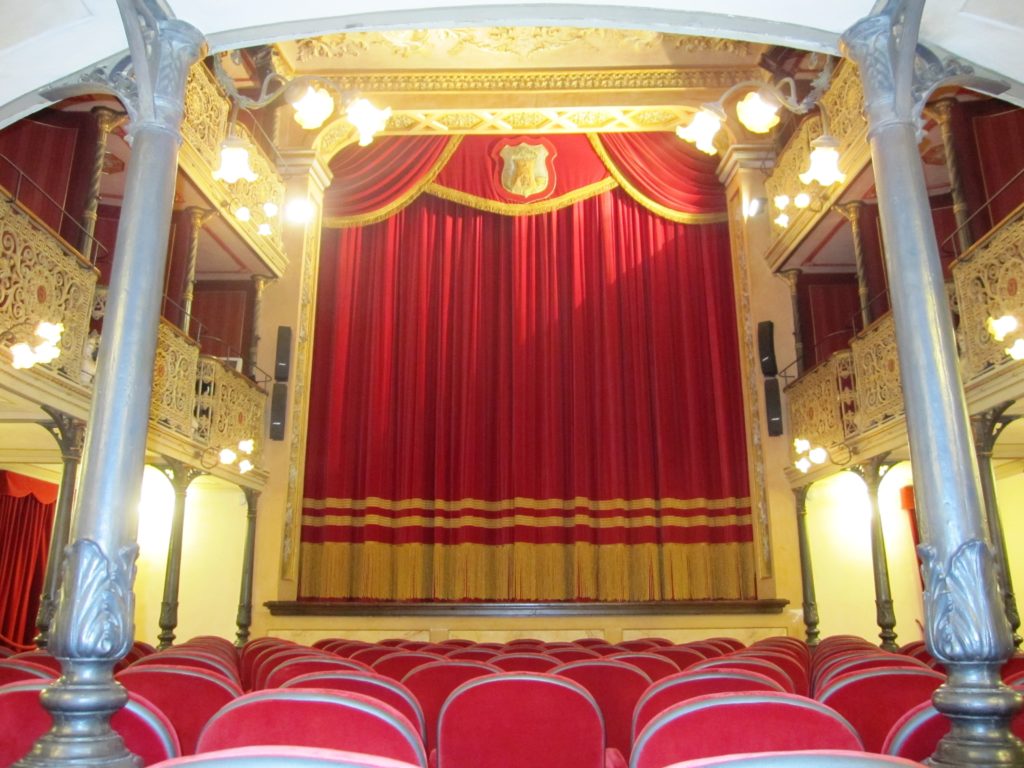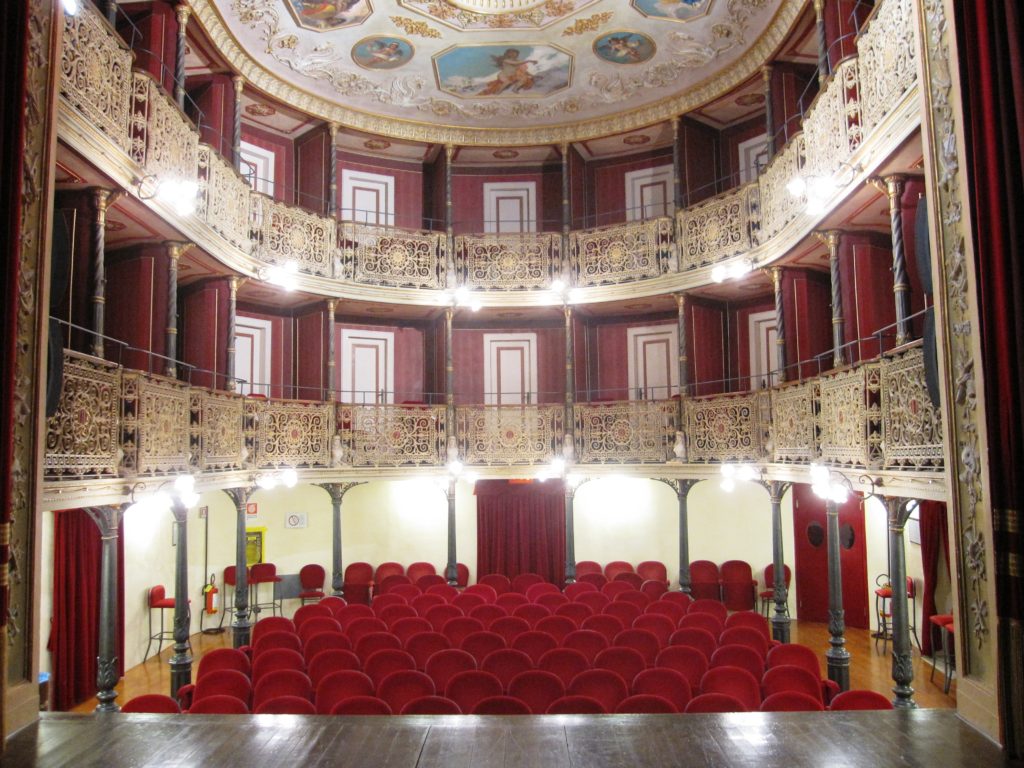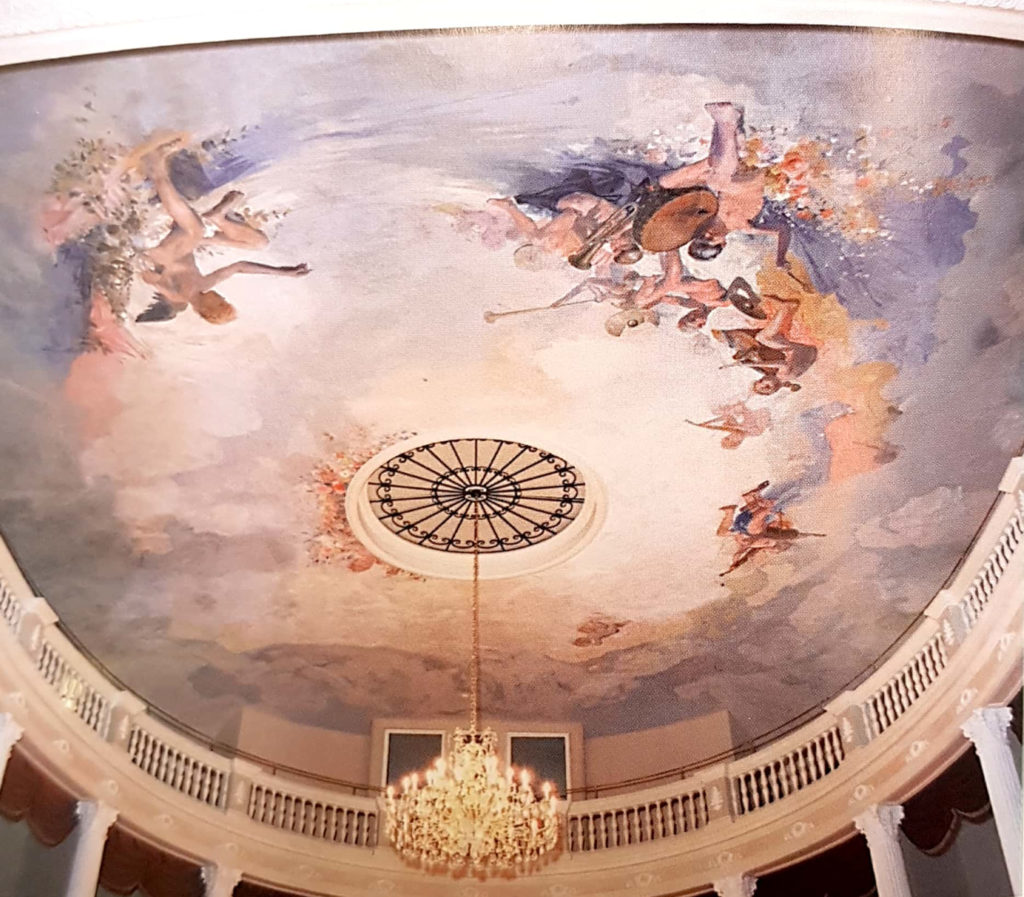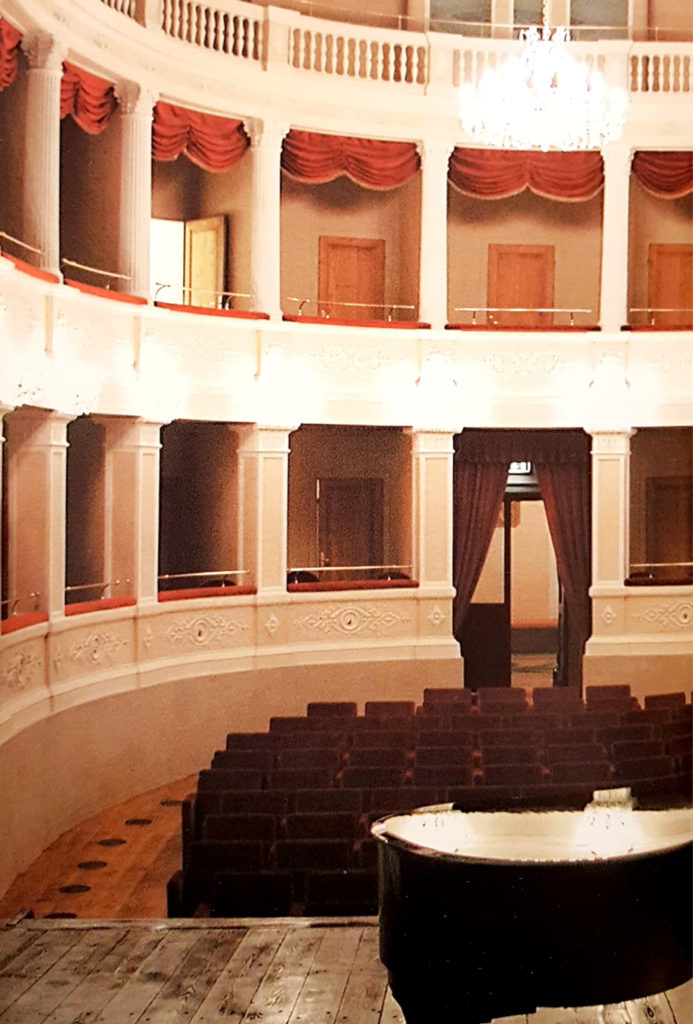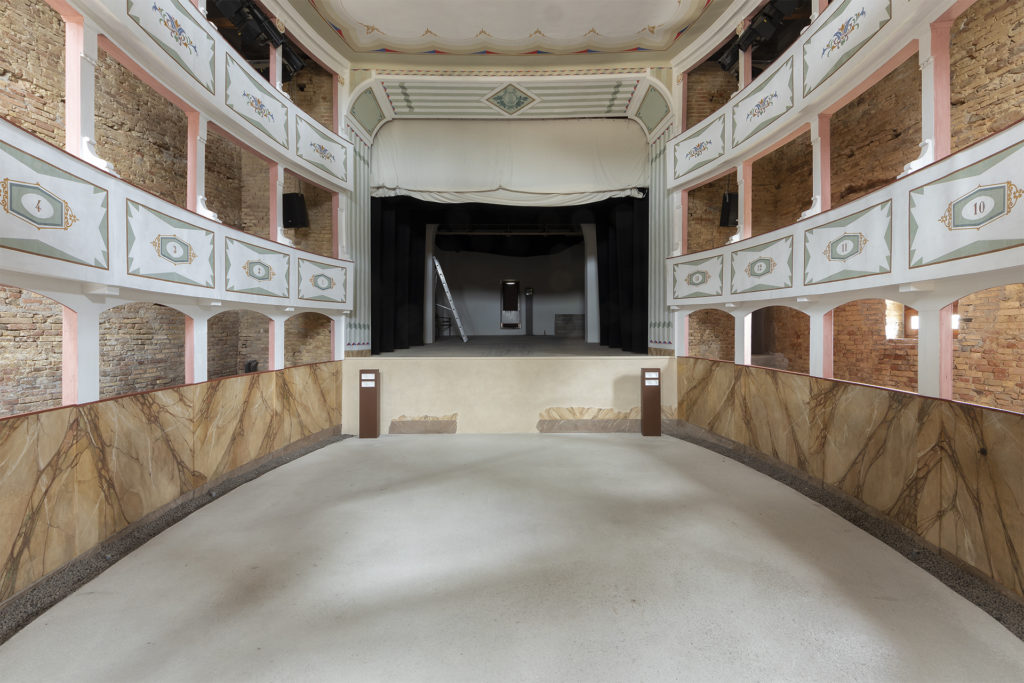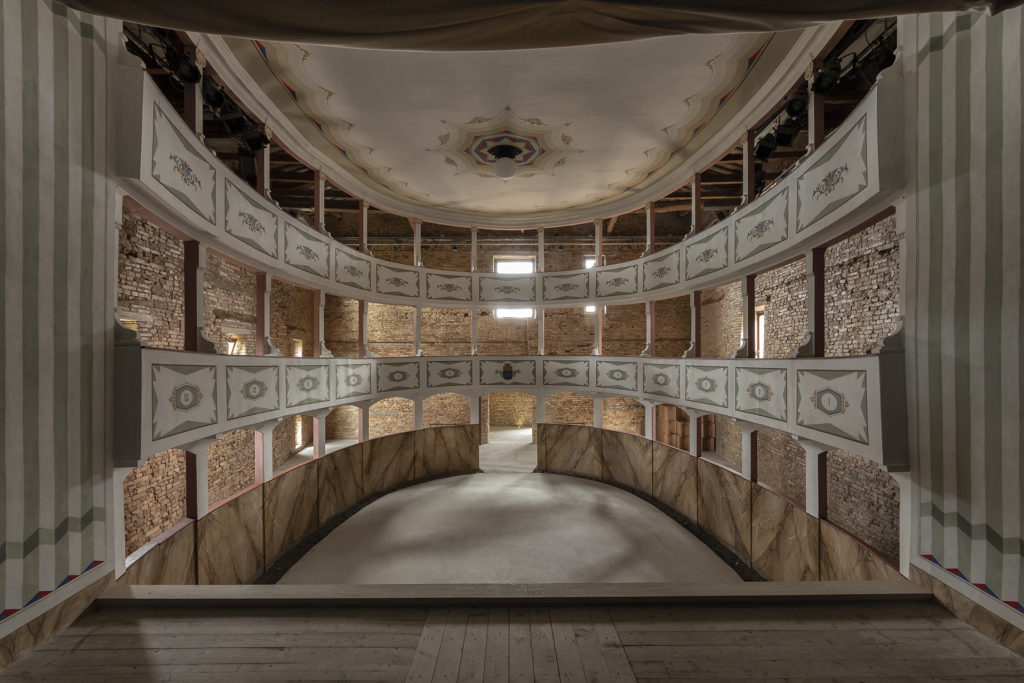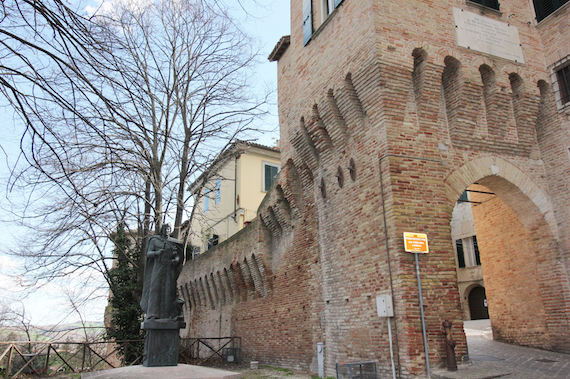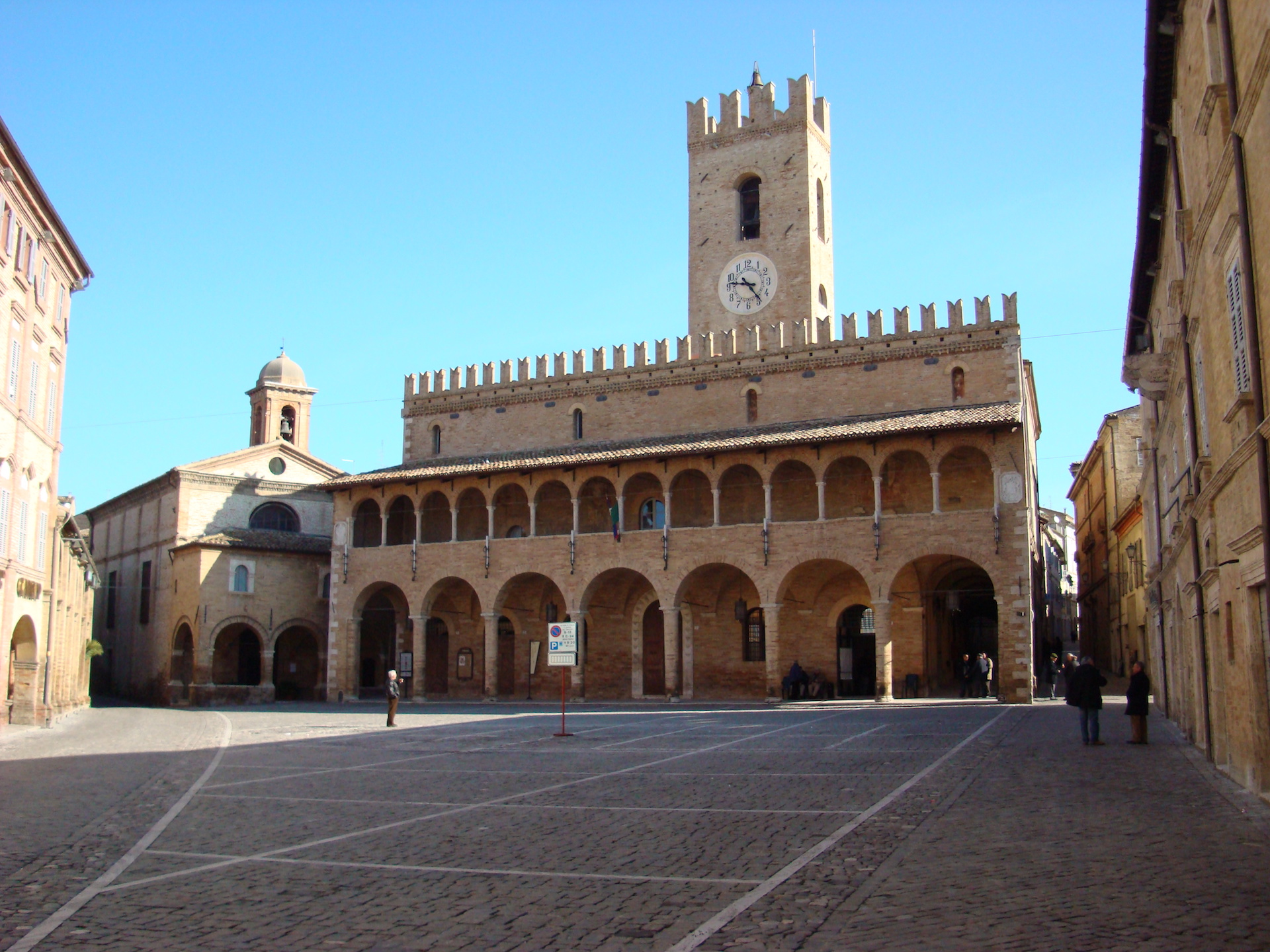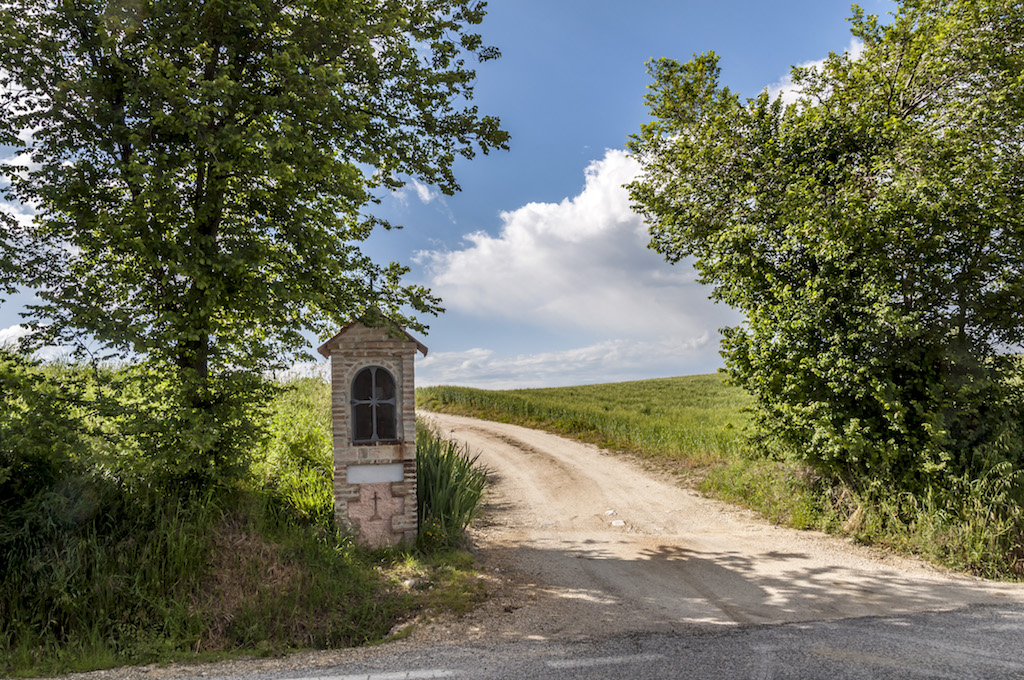Little great jewels
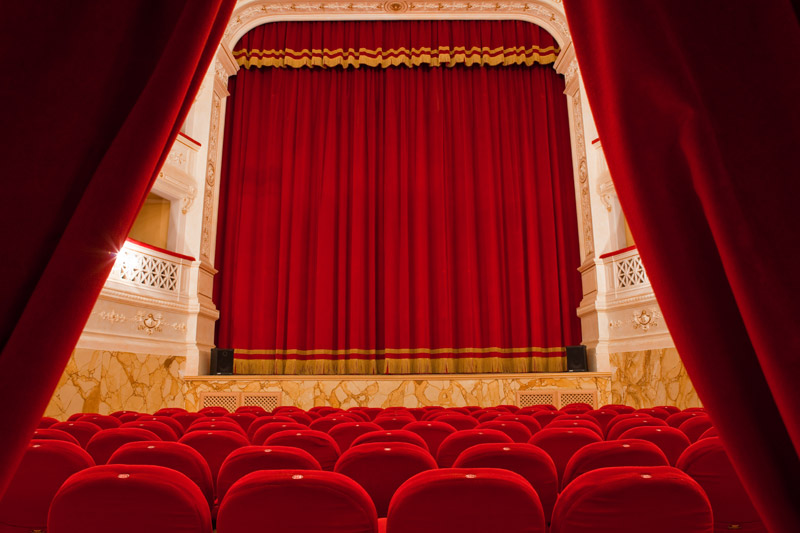
In the 18th century, though its population consisted of less than one million people, Marche boasted as much as 113 working theatres, both big and small, spread in cities and towns, which are still regarded as little jewels of the region. Very many are indeed, in Marche, the historical theatres where shows and festivals are still performed. Ten of these, though counting less than 500 seats, are worth visiting: the Misa Theatre in Arcevia and the Cortesi Theatre in Sirolo, in the province of Ancona; the Serpente Aureo Theatre in Offida and the Luigi Mercantini Theatre in Ripatransone, in the Ascoli Piceno province; the Iride Theatre in Petritoli and the Vincenzo Pagani Theatre in Monterubbiano, in the Fermo province; the Rondinella Theatre in Montefano and the Nicola degli Angeli Theatre in Montelupone, in the Macerata province; the Concordia Theatre in St. Costanzo and the Triumph Theatre in Cartoceto, in the Pesaro-Urbino province.
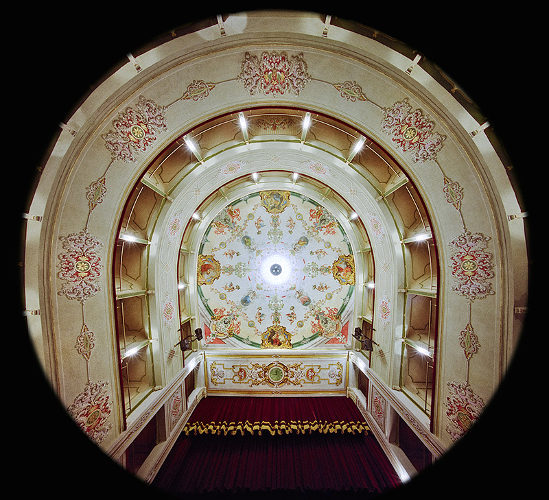
The Misa Theatre (named after the nearby river) is a little architectural jewel built in Arcevia between 1840 and 1845 on the top floor of Palace of Priori, on the location of an earlier 18th century theatre. The XIX century reconstruction was entrusted to Giuseppe Ferroni and Vincenzo Ghinelli, pupils of Pietro Ghinelli who designed the Teatro delle Muse in Ancona. Its entrance is connected with the atrium by a straight staircase; another staircase connects the atrium and the foyer. The theatre, in a “U” shape, has three orders of daises plus six more daises by the sides of proscenium, for a total number of about 150 seats, with strip balustrades separated by backward pillars.
The wide stage raises 1.50 metres above the parterre level. The ceiling is frescoed with geometric and floral images and, in the centre, with a rose inscribed into a 8 points star with muses and poets by its sides, a work by painter Luigi Mancini, nicknamed “the Deaf”. Ornaments on balustrades, in the shape of little masks and golden listels, are instead the work of scenographer Cesare Recanatini, who also created eight backcloths with their original flats. Daniele Ferretti, a stage technician from Ancona, made the original and still preserved technical equipment. Nowadays the Misa Theatre hosts most interesting theatre – mostly prose – seasons, with a rich variety of shows fit for spectators of all ages.
The Cortesi Theatre in Sirolo was inaugurated in 1875 with a prose show and a musical concert. The building, embodied into the city walls, is built with white stone carved from mount Conero. It consists of two buildings, one hosting the access foyer and the boardrooms, the other the theatre and its stage.
The theatre is in the shape of a horseshoe, surrounded by painted wooden Doric columns which sustain two orders of 11 daises each, hosting about 170 seats in total, separated by little pillars and adorned with strip balustrades decorated with hexagonal frames bearing gilded stucco reliefs. The vault is decorated with ten female figures dancing inside octagonal frames encircling the central rose, from which a crystal chandelier hangs.
Here a winter theatre season is performed: a very rich playbill offering a variety of festivals, prose shows and music concerts. In the summertime shows move to the natural stage of Teatro alle Cave (Quarry Theatre), dug into the ancient stone quarries on the Conero mountain.
The Teatro del Serpente Aureo (Golden Snake Theatre) was built in Offida in 1820, based on a project by architect Pietro Maggi, and restructured in 1862. Its horseshoe shape is in a perfect baroque style. The 50 daises divided into three orders, the gallery and the parterre offer about 320 seats in total. A neoclassic atrium, adorned with statues reproducing female images, leads to the small parterre. Plaster decorations and gilded incisions on a green background are by the Offida painter G.Battista Bernardi, who painted them probably at the end of the 18th century, whereas the vault, representing Apollo and the Muses, was painted by Alcide Allevi (1831-1893), another artist from Offida and a pupil of the Academy of St. Lucas in Rome. Around the vault, eight medallions portray prose and music drama authors: Pergolesi, Verdi, Bellini, Donizetti, Rossini, Alfieri, Goldoni and Metastasio. The theatre is enlightened by a crystal globe chandelier. On the stage still stands the 1826 curtain, representing the legend of the mythical Golden Snake, which tells that in the territory of Offida, in pre-Roman times, there stood an ancient pagan temple dedicated to Ophys, a divinity linked to the cult of snakes. The citizens of Offida, so they say, found in the fields a golden snake and kept it for a long time in town as a talisman.
The Theatre hosts nowadays cultural and entertainment events further to the traditional Carnival ball, a strong tradition, famous by now also outside the region.
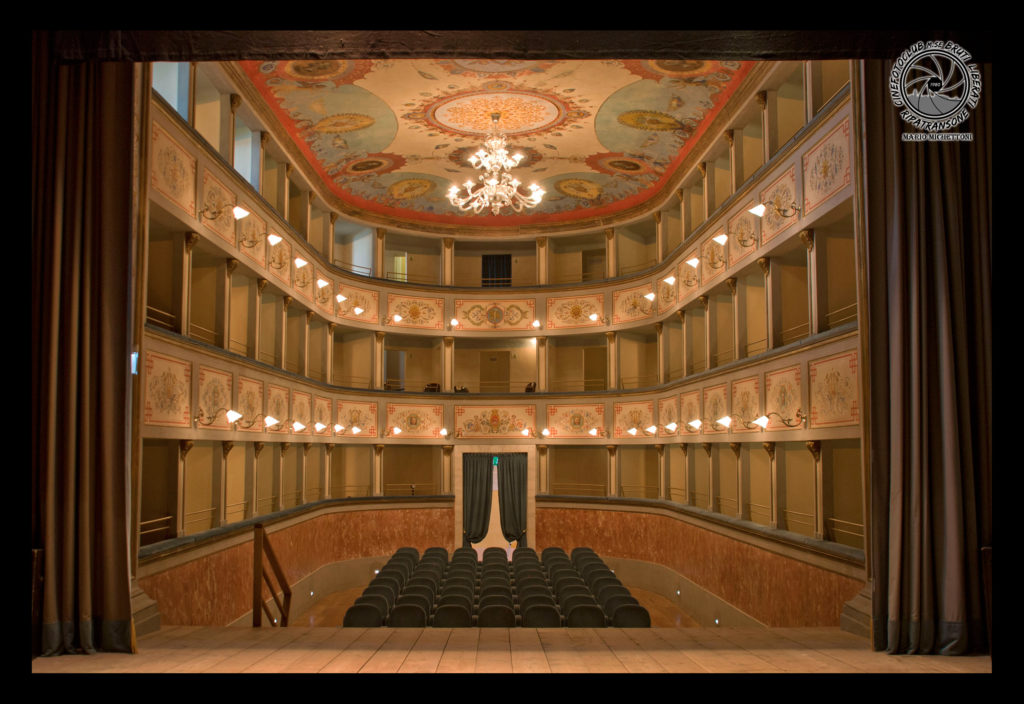
The Ripatransone Theatre was inaugurated in 1843 with a performance of Donizetti’s “Lucia di Lammermoor”. In 1894 it was dedicated to Luigi Mercantini, a patriotic poet born in Ripatransone. The theatre is accessible through the portico of the Podestà Palace; the foyer and the theatre, as well as the complementary areas, are placed at the upper level.
The horseshoe plant of the theatre, recalling the Serpente Aureo Theatre in Offida, is probably due to room necessities. In the theatre there are three orders of daises and no balcony, with about 250 seats in total.
A strong characterization is given to the theatre by the ceiling, decorated with floral images and a series of medallions, some of which contain portraits of Gioachino Rossini, Giuseppe Verdi, Vittorio Alfieri, Vincenzo Bellini, Carlo Goldoni and Pietro Metastasio. Closed in 2008 due to restoration and upgrading of systems works, the theatre was reopened on April 14, 2012, on the notes of Goffredo Mameli’s Italian national anthem. Nowadays it is also promoted by the “Luigi Mercantini” Foundation, which to preserve its value takes care of its historical structure and promotes the performance of shows, of its communications and of all other activities related to its life.
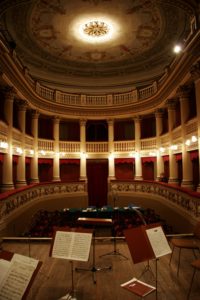
The Iride Theatre in Petritoli was designed by civil engineer Giuseppe Sabbatini and inaugurated on May 20, 1877. Inside, Sabbatini placed all around it a tall base sustaining Corinthian columns, which frame two orders of daises and on which rests the gallery; about 226 is the total number of seats. Walls are enriched with stucco works and gildings, and the ceiling with paintings. The latter, built à plafond with a very tense bend, is decorated all around with a band containing allegoric images, female figures and four medallions. In 1957 the theatre was closed due to security problems, and stayed unused till the eighties, when refurbishing works returned it to its original elegance and led to its reopening in the spring of 1982. Since then, the Teatro dell’Iride is every year at the centre of cultural activities in Petritoli with seasons of prose, of music and, most of all, with the biennial International Oboe Contest, created in 1995, dedicated to the fellow citizen Giuseppe Tomassini (1915-1987), a renowned oboist in the orchestras of the Opera Theatre and of the St. Cecilia Academy in Rome, and a professor in the homonymous Conservatory.
The Vincenzo Pagani Theatre in Monterubbiano was inaugurated in 1875, on the location of a 16th century building called “il Palazzaccio” (the ugly palace), belonging to the Pagani family, a member of which was the dedicatory of the theatre, the famous painter Vincenzo (1490-1568). The project was designed by architect Francesco Ridolfi, from Ancona, and the works supervised by Luca Galli. The theatre has a horseshoe plan; the first of its three orders of daises is decorated with a peculiar wooden railing, with fretwork carvings and gilded decorations. On the vault a series of tondi, painted by Maranelli da Sant’Elpidio, portray in colour Carlo Goldoni, Vittorio Alfieri, Ludovico Ariosto and Dante Alighieri and, in monochrome, Raphael Sanzio and Vincenzo Pagani. They all surround the centre tondo representing three Muses, probably Erato carrying a lyre, Melpomene with a mask and Calliope with a stylus and a papyrus, allegorical figures connected to the personalities surrounding them. The historical curtain was created in 1881 by scenographer Alessandro Bazzani. It is a homage to Vincenzo Pagani portrayed with a marine landscape and pine trees on the background, a palette and an easel, the instruments of his art in his hands and painting a canvas. The theatre hosts the “Beniamino Gigli” Music Academy, which promotes didactic activities, instrumental and vocal concerts and the performance of operas.
In 1883 the Montefano city council charged civil engineer Virginio Tombolini, a former technical director at La Fenice Theatre in Venice, to complete the construction of La Rondinella Theatre, which had started at the end of the 18th century. Tombolini designed an original iron structure with cast iron columns sustaining 22 daises, divided in two orders, capable, with the parterre, to host about 150 spectators in total.
On August 28 1886, when works were finished, the town awarded Tombolini with a certificate of gratitude for the originality of the iron structure and made him a honorary citizen. This award is mentioned in a plaque placed in the foyer, which is called “hall of poets” because of six plaster medallions portraying Leopardi, Raphael, Goldoni, Verdi, Alighieri and Alfieri painted on its ceiling. Fresco decorations were entrusted to the Perugian painter Domenico Bruschi (1849-1910) who painted on the vault of the theatre the muses Melpomene (tragedy), Thalia (comedy), Terpsicore (dance) and Euterpe (music). Between the Muses are painted four tondos with putti bearing the names of the seasons of life: Childhood, Youth, Maturity and Old Age. The parterre has been given a “U” shape because of its small size (it is 8.2 meters high, 10.1 wide, 15.8 long). After an important restoration, in 2005 The Rondinella Theatre came back to its ancient splendour and hosts events and festivals.

Nuovo documento 2019-05-03 09.33.33 
Nuovo documento 2019-05-03 09.33.33
Designed by Giuseppe Sabbatini, the Degli Angeli Theatre in Montelupone was built between 1884 and 1898. It is entitled to the town’s illustrious citizen Nicola Degli Angeli (1535-1604), an author of theatre and literary works who was the secretary of pope Sixtus V (who was from the Marche) and a friend of Torquato Tasso’s.
The entrance is at the ground floor of town hall, of which the theatre is an integral part. Access to the theatre takes place after walking a long straight corridor accessible from the atrium and after crossing the foyer. Architect Sabbatini gave the theatre an elliptical plan; he planned two orders of daisies (which are 15 in total) and a balcony with a balustrade adorned with little pillars. Columns between the daises, rather massive at the first order, get thinner up the second and are adorned with Corinthian capitals. The proscenium, bearing a lowered bend epistyle, hosts four more daises, so that the total number of seats is 272. The ceiling too has a lowered vault. It was decorated by Domenico Ferri (1857-10940), a painter from the Piceno area and a professor at the Bologna Beaux Arts Academy, who designed satirical tempera images of musician angels and putti: their tambourines look broken due to an excess of excitement, so that what at first looks like a gracious liberty image turns into a burlesque farce. All floral decorations, as well as the white and red colours, are clearly linked to the neo-classical style.
The historical Degli Angeli Theatre has nowadays come to new life due to its theatre season and is becoming an element of connection and cooperation with other institutions, both in Marche and international.
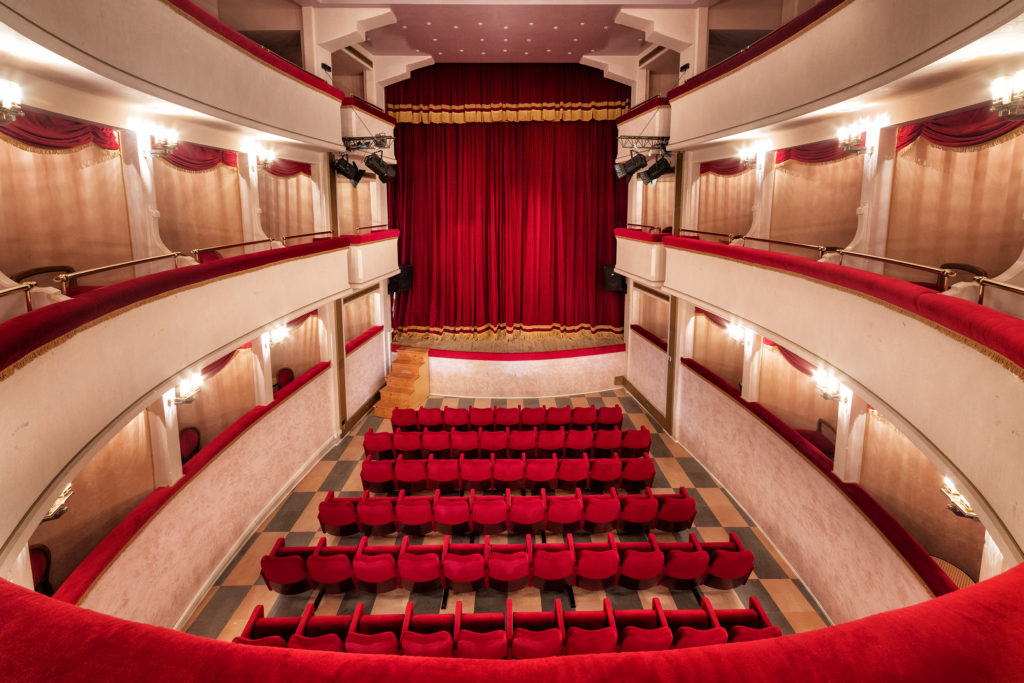
First news about a theatre in St. Costanzo castle dates back to March 18, 1721, when a Theatre Society was founded and a large hall was expressly adapted. Unlike the common praxis, the place was open to the population since the beginning. Between the end of the 18th and the beginning of the 19th century, count Francesco Cassi, owner of the homonymous palace in the centre of the town in front of the castle, came often to stay in San Costanzo with his dearest friends one of whom was count Perticari, accompanied by his wife and by her father, poet Vincenzo Monti. During those years, in Theatre of Concordia Alfieri’s tragedies, Monti’s “Aristodemo” and Goldoni’s comedies were performed, and most probably also previews of Monti’s works before their official performance in great cities.
Access to the theatre takes place through the south-east door of the castle. The theatre plant has a 18th century horseshoe shape and its 25 daises are divided into two orders; above them there stands a gallery, leading to a total number of 150 seats.
In the cleanest days, the Adriatic sea can be clearly seen from the stage. The current design of the theatre is the outcome of two restorations: in 1935 the original wooden structures were replaced with masonry, keeping the original shape but cancelling the ancient decorations on the railings of daises and around the vault, and in 1987 the structure was upgraded to new safety rules. Nowadays the theatre hosts such national and local festivals, meant both for adults and children, as “Teatri d’Autore” (Art Theatre”), in association with the historical theatres in the Pesaro and Urbino province, and “Scena Ridens” (“A laughing Stage”), the first comic theatre festival in Marche.
The Teatro del Trionfo (Triumph Theatre) was built in 1801 in Cartoceto by an anonymous designer. Its 37 daises, divided into three orders (11 on the first, 13 on both the second and the third) and the parterre offer about 200 seats in total. The horseshoe plant is delimited at the sides of the proscenium by two wide vertical bands adorned with false painted flutings. The little stage is still equipped with the scenes painted by Giulio Marvardi in the second half of the 19th century, the same time when scenographer Romolo Liverani from Faenza painted on the curtain a rustic landscape with a classical little temple and a view of Cartoceto on the background. The stage is very appreciated by artists and musicians because of the acoustics created by the facing daises. Shows were regularly performed in the theatre, especially during the carnival, in the 19th century, provided “a tub filled with water was kept ready” against possible fires. The Theatre of Triumph is by now a central reference point for cultural activities in Cartoceto. Its rebirth is connected with “Cartoceto DOP”, a trade show of Oil and Olives, one of the most important autumn agricultural events both in Marche and in Italy.
by Elisa Marasca
